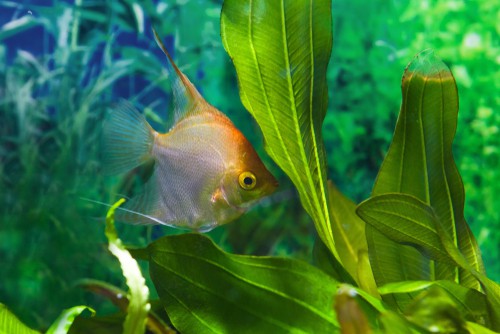Amazon Sword plants are a popular choice for freshwater aquariums due to their beautiful appearance and easy care requirements. However, one common issue that aquarium owners face is their Amazon Sword turning brown.
This can be a frustrating problem to deal with, but it is important to understand the potential causes and solutions in order to keep your Amazon Sword healthy and vibrant.
Understanding the Amazon Sword plant is key to preventing and treating brown leaves. This plant is native to South America and requires a nutrient-rich substrate, moderate lighting, and a pH level between 6.5 and 7.5.
When these requirements are not met, the plant can become stressed and develop brown spots or leaves. Additionally, Amazon Sword plants are heavy root feeders and require regular fertilization to thrive.
Why an Amazon Sword plant is turning brown can be due to a variety of factors. Poor water quality, inadequate lighting, nutrient deficiencies, and incorrect pH levels are all potential culprits.
It is important to identify the underlying cause in order to properly treat the plant and prevent further damage. Proper care for Amazon Sword plants includes regular water changes, maintaining appropriate lighting and pH levels, and providing adequate nutrients through fertilization.
Key Takeaways
- Understanding the requirements of the Amazon Sword plant is key to preventing brown leaves.
- Poor water quality, inadequate lighting, and nutrient deficiencies can cause brown leaves.
- Proper care for Amazon Sword plants includes regular water changes, maintaining appropriate lighting and pH levels, and providing adequate nutrients through fertilization.
Understand why your other favorite plants are turning brown with these popular picks:
Understanding Amazon Sword
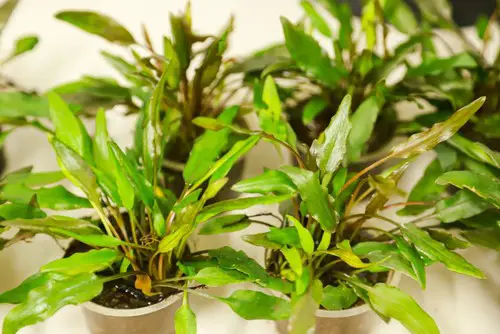
Species Overview
Amazon Sword (Echinodorus) is a genus of aquatic plants that belongs to the Alismataceae family. These plants are native to the Amazon River Basin and other regions of South America. Amazon Sword plants are popular among aquarium enthusiasts due to their ornamental value and ease of care.
There are many different species of Amazon Sword plants, each with unique characteristics. Some of the most popular species include Echinodorus bleheri, Echinodorus cordifolius, and Echinodorus tenellus. These plants vary in size, shape, and color, but they all share similar care requirements.
Size and Growth Rate
Amazon Sword plants are known for their size and rapid growth rate. Depending on the species, these plants can grow up to 20 inches in height and 10 inches in width. They have long, narrow leaves that grow in a rosette pattern.
The growth rate of Amazon Sword plants can vary depending on the conditions they are grown in. In ideal conditions, these plants can grow up to 2 inches per week. They require plenty of light, nutrients, and carbon dioxide to thrive.
Amazon Sword plants are best suited for larger aquariums due to their size and growth rate. They can be planted in the substrate or in pots filled with nutrient-rich soil. These plants can also be propagated by separating the plantlets that grow from the base of the mother plant.
Amazon Sword Turning Brown – 3 Common Problems
If you notice that your Amazon Sword plant’s leaves are turning brown, it could be due to a variety of factors. In this section, we will explore some of the possible reasons why your Amazon Sword is turning brown and what you can do to fix the issue.
Lighting Issues
One of the most common reasons why Amazon Sword plants turn brown is due to lighting issues. If your plant is not receiving enough light, it can lead to the leaves turning brown and even dying off. On the other hand, if your plant is receiving too much light, it can cause the leaves to burn and turn brown as well.
To ensure that your Amazon Sword is receiving the proper amount of light, make sure that you are using the appropriate wattage of light for your tank size and that the light is positioned at the correct distance from the plant. Additionally, make sure that you are providing your plant with a consistent light cycle of 10-12 hours per day.
Nutrient Deficiencies
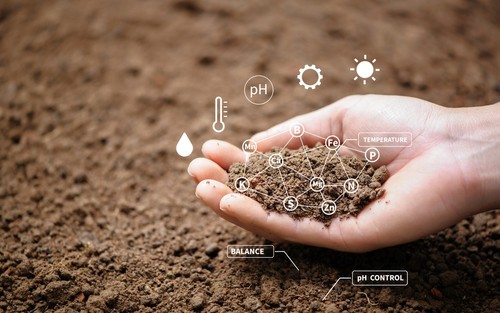
Another common reason why Amazon Sword plants turn brown is due to nutrient deficiencies. If your plant is not receiving the proper nutrients, it can lead to the leaves turning brown and even dying off.
To ensure that your plant is receiving the proper nutrients, make sure that you are using a high-quality fertilizer that is specifically designed for aquatic plants. Additionally, make sure that your plant is receiving the appropriate amount of CO2, which is essential for plant growth.
Water Conditions
Water conditions can also play a significant role in the health of your Amazon Sword plant. If the water parameters are not within the appropriate range, it can lead to the leaves turning brown and even dying off.
Make sure that your water parameters, including pH, GH, KH, and temperature, are within the appropriate range for your Amazon Sword plant. Additionally, make sure that you are performing regular water changes to ensure that the water quality is maintained.
If you have soft water, you may need to add a water conditioner like Seachem Equilibrium or Prime to ensure that your plant is receiving the appropriate amount of minerals.
If you notice that your Amazon Sword plant is turning brown, it is essential to act quickly to identify and address the issue. By addressing the lighting, nutrient, and water conditions, you can help ensure that your plant stays healthy and vibrant.
Proper Care for Amazon Sword
Amazon Sword is a popular freshwater aquarium plant that is known for its lush green leaves. However, if the leaves of your Amazon Sword plant are turning brown, it may be a sign of poor care. Here are some tips on how to properly care for your Amazon Sword plant to keep it healthy and green.
1. Planting and Substrate
Amazon Sword plants require a nutrient-rich substrate to grow well. A substrate of gravel or sand is ideal for these plants. Make sure the substrate is at least 2-3 inches deep to allow the roots to spread and anchor the plant. Adding some rocks around the base of the plant can also help to anchor it.
When planting the Amazon Sword, make sure to bury the roots completely in the substrate. The crown of the plant should be just above the substrate. If the crown is buried too deep, it can lead to rotting of the plant.
2. Feeding and Fertilizers
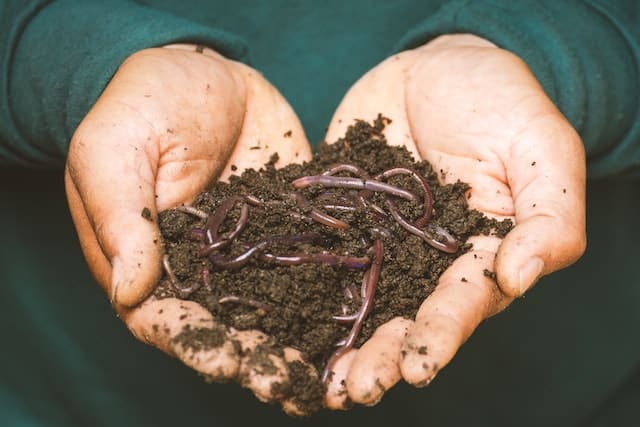
Amazon Sword plants require regular feeding to grow well. A good quality fertilizer that contains iron, potassium, and other essential nutrients is recommended. Root tabs, such as Seachem root tabs, can also be used to provide additional nutrients to the plant’s root system.
It is important to avoid overfeeding the plant as this can lead to algae growth and other problems. Follow the instructions on the fertilizer package and adjust the feeding schedule based on the growth of the plant.
3. Trimming and Propagation
Regular trimming is necessary to keep the Amazon Sword plant healthy and to encourage new growth. Trim off any yellow or brown leaves as soon as you notice them. This will prevent the plant from wasting energy on dead leaves and allow it to focus on new growth.
Propagation of Amazon Sword plants is relatively easy. They produce runners that can be cut off and replanted in the substrate. New plants will grow from these runners and create a dense, lush carpet of plants.
Dealing with Common Issues
Amazon swords are generally hardy plants, but they can still develop issues that cause the leaves to turn brown. Here are some common issues and how to deal with them.
1. Algae Growth
Algae growth is a common problem in aquariums, and it can cause the leaves of Amazon swords to turn brown. To prevent algae growth, it is important to maintain good water quality. This can be achieved by doing regular water changes, avoiding overfeeding, and keeping the aquarium clean.
If algae growth is already present, there are a few things you can do to get rid of it. One option is to reduce the amount of light the aquarium receives. Another option is to add algae-eating fish or invertebrates to the tank. Finally, you can manually remove the algae with a brush or scraper.
2. Crown Rot
Crown rot is a fungal disease that can cause the leaves of Amazon swords to turn brown. It is usually caused by poor water quality or damage to the plant’s roots. To prevent crown rot, it is important to maintain good water quality and avoid damaging the plant’s roots.
If crown rot is already present, the affected leaves should be removed immediately. The plant should also be treated with a fungicide to prevent the disease from spreading.
3. Leaf Loss
Leaf loss is a natural process for Amazon swords, but it can also be caused by poor water quality or damage to the plant’s roots. To prevent leaf loss, it is important to maintain good water quality and avoid damaging the plant’s roots.
If leaf loss is already present, the affected leaves should be removed immediately. The plant should also be given a nutrient-rich fertilizer to encourage healthy leaf growth.
4. Healthy Leaves
To keep Amazon swords healthy, it is important to provide them with the right conditions. This includes good water quality, adequate lighting, and a nutrient-rich substrate. It is also important to avoid overcrowding the aquarium, as this can lead to poor water quality and damage to the plant’s roots.
By following these tips, aquarists can keep their Amazon swords healthy and prevent the leaves from turning brown.
Choosing the Right Aquarium Setup
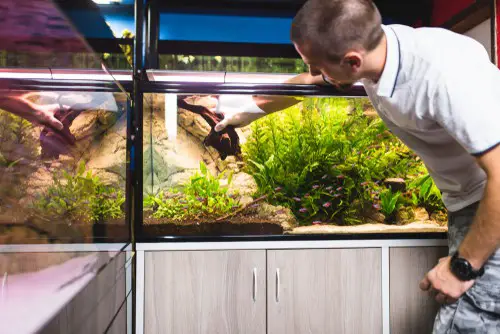
When it comes to keeping Amazon Sword plants healthy and vibrant, choosing the right aquarium setup is crucial. Here are some important factors to consider:
1. Tank Size
The first thing to consider is tank size. Amazon Sword plants require a lot of space to grow, so it’s important to have a tank that is large enough to accommodate them. A tank size of at least 20 gallons is recommended. If you plan on keeping other fish or plants in the tank, you may need to go even larger.
2. Lighting Setup
Amazon Sword plants require a moderate amount of light to thrive. A good lighting setup for these plants should provide between 2 and 3 watts of light per gallon of water. LED lights are a popular choice for aquarium lighting because they are energy-efficient and provide a full spectrum of light.
3. Water Parameters
The water conditions in your tank are also important for the health of your Amazon Sword plants. These plants prefer a slightly acidic to neutral pH range of 6.5-7.5. It’s also important to make sure your tank is cycled before adding any plants or fish.
Cycling your tank involves establishing beneficial bacteria that will help break down waste and keep the water clean.
Additional Tips for Beginners
Amazon Sword plants are generally low maintenance and hardy, making them a popular choice for beginners in the aquarium hobby. However, even with their resilience, they can still experience issues such as browning leaves. Here are some additional tips for beginners to help keep their Amazon Sword plants healthy and vibrant:
- Lighting: Amazon Sword plants require bright lighting, with at least two to three watts per gallon. Full spectrum lighting is recommended to simulate natural sunlight and provide all the colors of the light spectrum. Insufficient lighting can cause the leaves to turn brown and die off.
- Water Parameters: Amazon Sword plants prefer a pH range of 6.5-7.5 and soft to moderately hard water. It is important to regularly test the water parameters and make any necessary adjustments to ensure optimal growing conditions.
- Nutrients: Amazon Sword plants are heavy feeders and require a nutrient-rich substrate or regular fertilization. A substrate specifically designed for planted aquariums can provide essential nutrients for growth and development.
- Pruning: Regular pruning can help prevent browning leaves and promote healthy growth. Remove any dead or dying leaves and trim back any overgrown sections to encourage new growth.
- Compatibility: Amazon Sword plants are compatible with most fish species, but it is important to research their compatibility with any potential tank mates. Some fish species may nibble on the leaves or uproot the plant, causing damage or stress.
Frequently Asked Questions
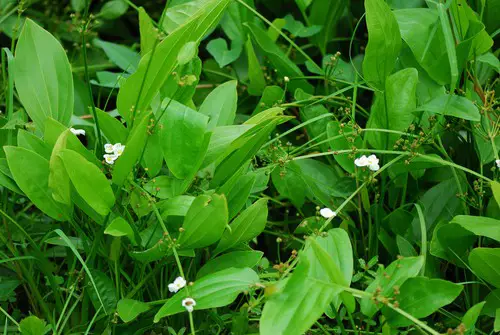
How can I prevent my Amazon sword leaves from turning brown?
To prevent Amazon sword leaves from turning brown, it is essential to maintain good water quality. Ensure that the aquarium water is clean and free from harmful chemicals and pollutants. Also, provide adequate lighting and nutrients to the plant to promote healthy growth.
What are the common causes of Amazon sword leaves turning brown?
The common causes of Amazon sword leaves turning brown include poor water quality, inadequate lighting, and a lack of nutrients. High levels of ammonia, nitrite, and nitrate can also cause browning of the leaves. Additionally, algae growth on the leaves can cause them to turn brown.
What is the ideal lighting for Amazon sword plants?
Amazon sword plants require moderate to high lighting to grow and thrive. The ideal lighting for these plants is between 2 to 3 watts per gallon of water. It is also essential to provide a photoperiod of 10 to 12 hours of light per day.
Can Amazon sword plants grow out of water?
Yes, Amazon sword plants can grow out of water. These plants are amphibious and can grow both submerged and emerged. However, it is crucial to maintain high humidity levels and provide adequate lighting and nutrients for the plant to grow well.
How often should I fertilize my Amazon sword plant?
Amazon sword plants require regular fertilization to promote healthy growth. It is recommended to fertilize these plants once a week with a balanced aquarium fertilizer. It is also essential to monitor the nutrient levels in the aquarium water regularly.
Why are my aquatic plant leaves turning brown?
Aquatic plant leaves can turn brown due to several reasons, including poor water quality, inadequate lighting, a lack of nutrients, and algae growth on the leaves. High levels of ammonia, nitrite, and nitrate can also cause browning of the leaves. It is essential to identify the cause and take appropriate measures to prevent further damage to the plants.

Hey, I’m Lisa and I’ve been an avid gardener for over 30 years. I love writing, talking and living in the garden! Feel free to connect with me on my socials below

